Pets and Anesthesia: What to Know
Posted: 09/14/2022 | BY: Erin Cain | Categories: Dog , Health problems , Pet care
When it comes to our furry friends, we want to do what’s best for them. That includes ensuring they receive the best possible care when they need surgery or other medical procedures. One thing that pet owners need to be aware of is the potential risks associated with anesthesia. This article will discuss pet owners’ knowledge about pets and anesthesia. We’ll cover everything from how anesthesia works to the potential risks involved. By arming yourself with knowledge, you can make informed decisions about your pet’s care.
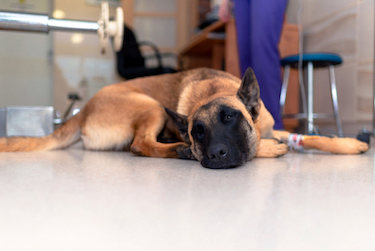
What is the anesthetic process for pets and anesthesia?
The use of anesthesia in pets is similar to that used on humans; thus, anesthetics are widely used during routine procedures. Your pet will be rendered unconscious. Their level of consciousness can remain controlled, so they don’t feel pain or move around while undergoing specific medical procedures such as surgery.
To make sure your pet’s procedure goes smoothly and without any complications, they must stay still. Veterinarians work with great precision during these procedures, and a pet’s movement during surgery can lead to other dangerous complications.
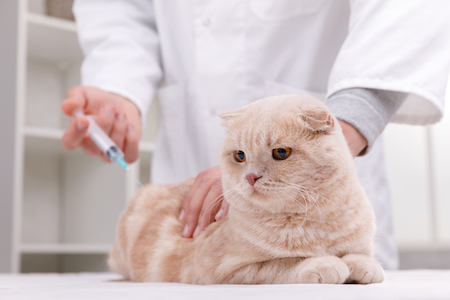
Most healthy pets have no problem with anesthesia. Typically, the risks of surgery are more closely related to your pet’s health than they would be from being anesthetized. Even most senior pets can handle anesthesia without issue.
While that news should be comforting to most pet parents, it often isn’t. Some dog and cat owners have heard horror stories about a pet who had an adverse reaction to veterinary anesthesia. While there is always a risk involved with anesthesia, you can significantly reduce your fears by discussing your concerns with your veterinary team. They will be happy to walk you through the process that your pet will experience. Below, we cover the basic steps of general anesthesia for pets.
Before anesthesia
The anesthetic process for your furry friend begins with a physical exam and a review of the pet’s medical history. The veterinarian may also do blood tests on the patient to check if there are any signs of pre-existing pathology, medical problems, or risks of anesthesia. If you have any questions regarding your pets’ health or anesthetic risks, ask a vet about it.
The veterinarian will likely give your pet a pre-anesthetic sedative before surgery, reducing their stress and making the process go more smoothly. Then, a catheter will be placed in your pet so they can receive intravenous fluids and medications. The anesthesia is then delivered by either intravenous infusion, gas inhalation, or both methods.
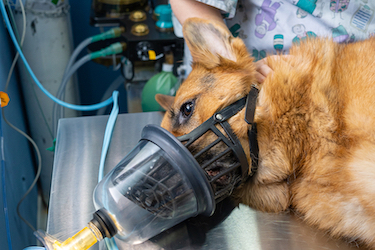
During anesthesia
Your pet will receive the same level of monitoring and care during the delivery of anesthesia and surgery as a person would in the same situation. The veterinarian and vet assistants will watch your pet’s reaction to the anesthetic during the surgery. Your pet may require medications and fluids to support the pet’s circulation and an endotracheal tube inserted into the pet’s trachea for the delivery of gas anesthesia during surgery.
The rest of the surgery will occur while your pet’s pulse oximetry measures the oxygen level in your pet’s blood. The veterinary team will monitor the dog or cat’s temperature and surround the pet with warming blankets to prevent hypothermia (a sudden drop in blood pressure). Electrocardiography (EKG) via a heart rate monitor keeps the veterinary team aware of a pet’s cardiac state.
After anesthesia
Once the procedure is done, your pet will wake up from anesthesia. The staff will place the pet in a quiet cage or kennel, usually one that is dark, so that they can recover. Veterinary staff closely monitor pets to make sure that they’re recovering. If not, the doctors can solve any problems quickly. Warm pads or blankets will line the crate to keep the pet warm during the recovery process.
Some pets have specific post-surgical reactions to anesthesia. It’s not surprising for some animals to shiver, whine, meow, or bark for up to 12 hours after the surgery is complete. Your pet will need to stay at the vet’s office for some hours. The endotracheal tube is removed when they are awake enough. The vets may continue fluids or medications depending on the pet’s condition and reaction to the anesthetic drugs.
Depending on the kind of surgery your pet had, they may need to remain in the hospital or go home later in the day.
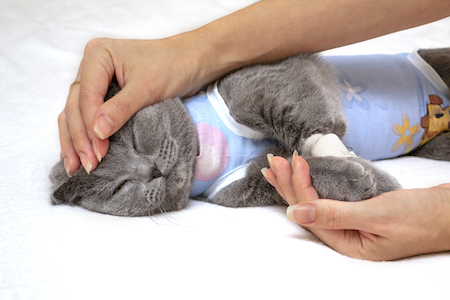
What are the risks of pets and anesthesia?
While anesthesia is common amongst pets undergoing surgery, there is a slight chance of risks to their health. According to Preventative Vet, about one in every 2,000 dogs and one in every 1,000 cats die from anesthesia each year; these numbers account for healthy pets only. While these deaths do happen, the mortality rates are overall relatively low. That said, some pets have more risk factors than others when it comes to anesthesia.
High-risk anesthesia is when anesthetic drugs are given to a pet with pre-existing medical conditions. The risks of anesthesia should weigh against the benefits of having surgery. Your pet could die during anesthesia, so you need to prepare for this possibility and decide whether it’s best for them and their quality of life.
Veterinarians often rank pets by class in terms of anesthetic risk during or after surgery:
Class 1:
There is minimal risk of a normal, healthy pet with no underlying illness. For example, consider a 6-month-old cat being spayed.
Class 2:
The risk of a mild to moderate systemic disease is slight. This case would be similar to a dog with early signs of dental disease having his teeth cleaned.
Class 3:
Pets with evident systemic disease are at moderate risk, such as a cat with a heart murmur.
Class 4:
Pets are at high risk due to a systemic, life-threatening disease or condition. An example would be a dog with a blockage and repeated vomiting for multiple days.
Class 5:
The patient in this class is near death and will die without surgery. In this situation, a dog or cat struck by a car who suffers catastrophic injuries would be called a Class 5 risk.
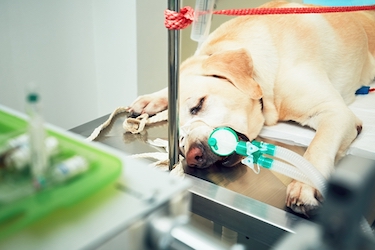
Pet size
Your vet will need to adjust the recommended anesthetic drug dosage and tailor it according to your pet’s body weight. Determining the dosage can be tricky since smaller animals require less medication because there’s not as much muscle or fat in them for the drugs to distribute through. Thin pets’ blood pressure decreases during anesthetic procedures, and their metabolic rate lessens. A veterinary team must keep a thinner pet warm throughout the surgery.
Due to compromised breathing issues, overweight pets can pose a challenge during surgery. The lungs suffer from oxygen deprivation because there is so much fat and tissue along the chest wall. They will struggle to breathe on their own as anesthetics reduce respiration levels. Veterinarians watch a pet’s breathing levels and use a breathing tube to assist the pet in respiratory functions.
Species type
A pet’s species and breed type can impact the risks associated with anesthesia. For example, cats are somewhat more challenging to anesthetize than dogs as they tend to be fussy and hard to restrain. Smaller cats can make it difficult to insert a catheter into their artery and monitor blood pressure during surgery due to their small vascular system.
Cats can be tough to intubate, so an experienced veterinary anesthesiologist must complete this action. Like many smaller animals, Cats will experience laryngeal spasms when a breathing tube is inserted in the throat, making an already challenging situation worse. Repeated attempts to incubate a cat may lead to permanent damage to the larynx and trauma in the airway.
Additionally, felines are harder to position for surgery, making moving and ventilating them problematic for many vets.
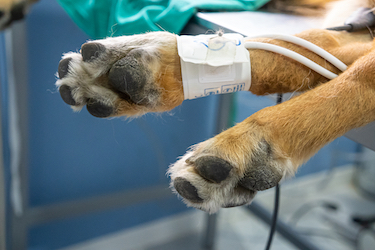
Breed type
During an anesthetic procedure, particular dog and cat breeds are susceptible to higher risks. Brachycephalic dog breeds are more difficult to sedate due to their flattened faces and short noses. Dog breeds such as the Boxer, Boston Terrier, French Bulldog, Pekingese, and Pug have narrower nasal passages. In some cases, they also have longer soft palates, making breathing post-surgical and anesthetic recovery hard for these pups.
Additionally, some canine breeds are susceptible to tracheal collapse. Poodles, Chihuahuas, Lhasa Apsos, and Yorkshire Terriers are at higher risk of medical complications during and after anesthesia due to this progressive condition. Often, dogs with tracheal collapse will cough for a week or two after intubation and may need antibiotics or cough suppressants to help their throat recover.
Cat brachycephalic breeds, like Persian or Himalayan felines, are similar to their canine brachycephalic counterparts. They have the same physical challenges that make anesthesia a high-risk prospect.
Pet age
Kittens and puppies older than three months can be sedated or anesthetized, but they may not respond as well because their organs aren’t yet fully functioning. Another issue is the smaller sizes of puppies and kittens, making them susceptible to hypotension during surgery.
For older pets, there is a risk that their organs may not be fully functioning, and anesthesia can further alter this function. This situation can be amplified if a senior pet has low blood pressure or has had strokes that cause the blood vessels to harden. The vessels become less flexible, thus restricting the flow of oxygen-rich blood throughout the older pet’s body, including vital organs such as the liver and kidneys.
Elderly dogs and cats are often weaker and more susceptible to illness than young pets. Old age makes them vulnerable in many ways. It increases the risk of anesthetic complications during surgery due to common age-related medical conditions, like diabetes or cardiovascular disease. Because underlying medical conditions can make anesthesia riskier in older pets, veterinarians must take extra precautions when positioning these pets for surgery to protect any arthritic joints.
To ensure your pet’s safety during surgery, vets must have the dog or cat’s baseline blood work done before the procedure. This test will help their veterinarian identify any underlying health problems and prepare for them if anything unexpected happens.
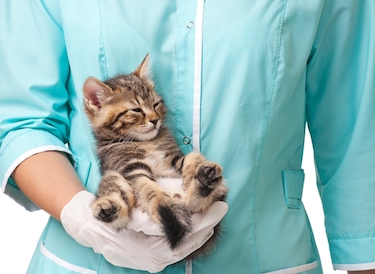
Steps to take to reduce your pet’s risk.
These are some steps that pet parents can take to reduce their dog or cat’s anesthetic risk during future surgeries:
- Don’t give any medications to your pet before anesthesia without first speaking with the veterinarian.
- Take care to follow any instructions your vet gives for your pet before surgery, especially if they involve withholding food or water.
- Keep a record of all your pet’s medications and supplements, including over-the-counter medical aids. Report this information to the veterinarian to determine whether there will be any conflict with the anesthetic procedure.
- Ensure that your pet gets regular preventive care at least once annually.
- To reduce the risk of injury, take steps to prevent pet injuries that may require anesthesia.
- Help your pet maintain a healthy weight.
- Let your veterinarian know about your pet’s medical history, specifically if your dog or cat has ever had any past reactions to anesthesia. The vet can then take necessary precautions before future anesthetic procedures.
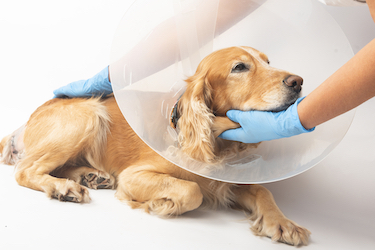
Emergencies are scary; pet insurance is not.
Emergency clinic bills for pets can be costly. It is easy to find yourself in a position where you need to choose between your financial capabilities and your pet’s health. Ensure that you have a pet insurance policy for your furkids, so they are covered no matter what happens. With a pet health insurance plan, you can ensure that your pup or kitty receives the best care possible. The provider will cover most of their treatment costs and reimburse your costs.
Let Pet Insurance Review help you help your pets! We will find the top providers and policies that fit your pet’s needs and budget. Start protecting your pet today with a free quote.
References:
- Lee, J. (2014). Pulse Oximetry. Retrieved from https://vetgirlontherun.com/veterinary-continuing-education-pulse-oximetry-veterinary-medicine-vetgirl-blog/
- Ward, E. (2014). Is It Cold In Here, Or Did Your Pet Just Have Surgery? Retrieved from https://www.pethealthnetwork.com/dog-health/dog-surgery-a-z/it-cold-here-or-did-your-pet-just-have-surgery
- Shafford, H. (2022). Minimizing the Risks of Anesthesia in Dogs. Retrieved from https://www.preventivevet.com/dogs/minimizing-the-risks-of-anesthesia-in-cats-and-dogs
- Geoffrey, T. (2020). Risk Factors in Small Animal Anesthesia. Retrieved from https://www.dispomed.com/risk-factors-in-small-animal-anesthesia/
- Marshall, S. (2021). Nursing considerations for anesthesia of the obese patient. Retrieved from https://bvna.org.uk/blog/nursing-considerations-for-anaesthesia-of-the-obese-patient/
- Ruess-Lamky, H. (2016). Purr-fect Feline Anesthesia. Retrieved from https://todaysveterinarynurse.com/anesthesiology/feline-anesthesia/
- Pacharsinak, C. (2015). Management of Anesthetic Complications in Feline Anesthesia. Retrieved from https://www.vin.com/apputil/content/defaultadv1.aspx?id=7259151&pid=14365&print=1#:~:text=Cats%20can%20have%20strong%20laryngeal,size%20of%20endotracheal%20tube%20lumen.
- Kerr,. K. (2020). General Anesthesia in Brachycephalic Dogs and Cats. Retrieved from https://www.thinkanesthesia.education/article/2020/08/general-anesthesia-in-brachycephalic-dogs-cats
- Moon, P. (2012). Anesthesia for Geriatrics. Retrieved from https://adamspet.com/news/anesthesia-for-geriatrics/
The information contained on this blog is intended for informational and educational purposes only and should not be construed as medical advice. It is not a substitute for professional veterinary care. Always consult with your veterinarian before making any changes to your pet's health care or treatment plan.
The authors of this blog are not veterinarians and do not claim to be experts in pet health. The information provided here is based on our own experiences and research, as well as information from reputable sources. However, we cannot guarantee the accuracy or completeness of this information.
We encourage you to do your own research and consult with your veterinarian before making any decisions about your pet's health.
Previous post
Keeping a Senior Cat Active and HealthyNext post
8 Tips for Camping with Your DogCompare top pet insurance providers plans.
Enter your dog’s age in years and months to calculate their age equivalent to human years.
Calculate your dog’s ageEnter your cat’s age in years and months to calculate their age equivalent to human years.
Calculate your cat’s age